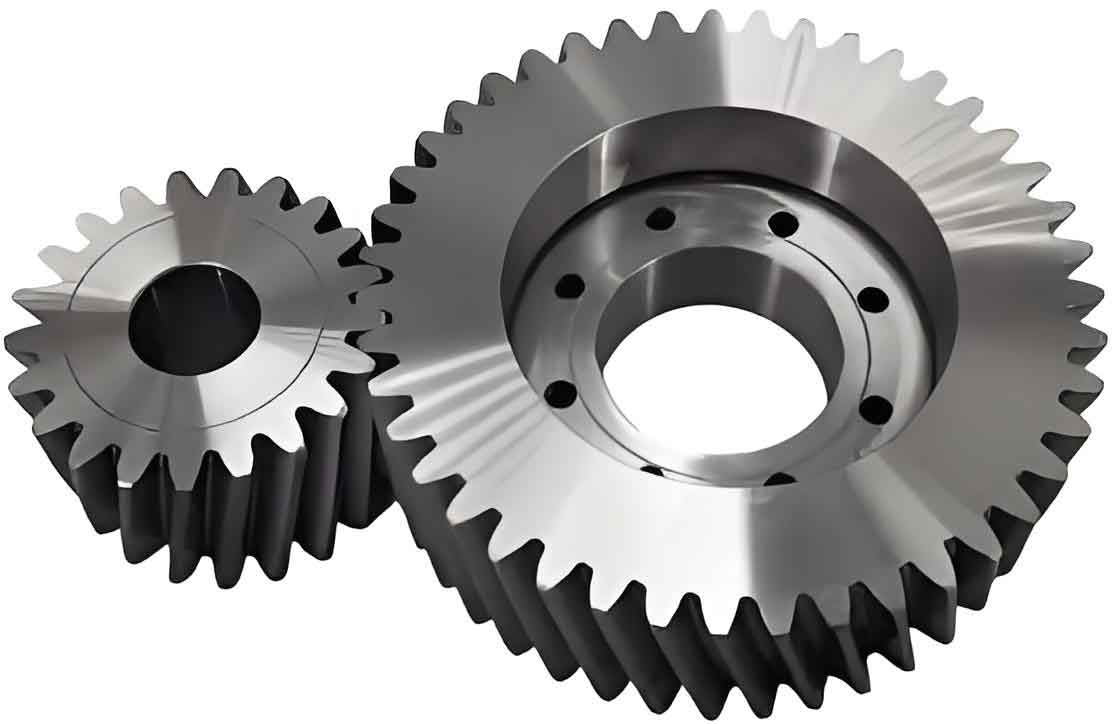Cumulative pitch errors significantly influence the dynamic behavior and wear characteristics of cylindrical gear systems. This study establishes a comprehensive framework integrating load distribution analysis, rotor dynamics, and wear prediction to evaluate the effects of these manufacturing imperfections. The proposed model addresses critical gaps in traditional wear simulations by incorporating gear-specific meshing variations caused by pitch deviations.

1. Load Distribution Analysis
The load distribution model for cylindrical gears considers cumulative pitch errors through modified loaded tooth contact analysis (LTCA). The nonlinear iterative equation governs the load sharing mechanism:
$$ \begin{bmatrix}
\lambda_c + \lambda_b & I_{n \times 1} \\
I_{1 \times n} & 0
\end{bmatrix}
\begin{bmatrix}
F_n \\
\delta_s
\end{bmatrix}
=
\begin{bmatrix}
\epsilon \\
F_s
\end{bmatrix} $$
Where $λ_c$ represents contact compliance matrix, $λ_b$ denotes bulk compliance matrix, and $F_n$ contains tooth load distribution data. For cylindrical gears with manufacturing errors, the equivalent normal deviation becomes:
$$ E_{pt} = f_{pt} \cos\alpha_t \cos\beta_b $$
2. Dynamic Modeling
The 12-DOF gear-rotor system model incorporates time-varying mesh stiffness calculated from LTCA results. Dynamic mesh force for cylindrical gears is expressed as:
$$ F_d = k(t)(V_m x_m – e(t)) $$
Key parameters for a typical cylindrical gear pair are summarized in Table 1.
| Parameter | Pinion | Gear |
|---|---|---|
| Number of Teeth | 28 | 56 |
| Module (mm) | 4 | |
| Pressure Angle (°) | 20 | |
| Face Width (mm) | 40 | |
| Elastic Modulus (GPa) | 210 | |
3. Wear Prediction Model
The modified Archard wear model for cylindrical gears incorporates dynamic load effects:
$$ \Delta h = \frac{2k_w \bar{\sigma}_H a_H}{H} \left|1 – \frac{v_g}{v_p}\right| \Delta N $$
Where the Hertzian contact half-width $a_H$ is calculated as:
$$ a_H = \sqrt{\frac{8F_d l_{sr}}{\pi LE_e}\left(\frac{1}{\rho_p} + \frac{1}{\rho_g}\right)^{-1}} $$
4. Results and Discussion
Dynamic transmission error spectra reveal significant hunting tooth frequency components caused by pitch errors in cylindrical gears. The characteristic frequencies are governed by:
$$ f_{ht} = \frac{f_m \operatorname{gcd}(z_1,z_2)}{z_1 z_2} $$
| Operating Cycles | Wear Depth (μm) | Non-uniformity Coefficient |
|---|---|---|
| 50×10⁶ | 3.2 ± 0.4 | 0.125 |
| 200×10⁶ | 12.8 ± 2.1 | 0.164 |
| 400×10⁶ | 25.6 ± 5.3 | 0.207 |
The hunting tooth design strategy reduces wear non-uniformity in cylindrical gears by optimizing tooth count relationships. The improvement factor is defined as:
$$ \eta = \frac{c_{wear}^{std} – c_{wear}^{ht}}{c_{wear}^{std}} \approx 30\% $$
5. Conclusion
This investigation establishes a comprehensive framework for analyzing dynamic wear in cylindrical gears with cumulative pitch errors. Key findings include:
- Cumulative pitch errors induce characteristic frequency components (hunting tooth frequency, assembly phase frequency) in vibration spectra
- Wear progression exhibits three distinct phases: initial running-in, steady wear, and accelerated failure
- Hunting tooth design effectively reduces wear non-uniformity by 30% through optimized tooth count selection
The developed model provides critical insights for designing durable cylindrical gear systems and predicting their operational lifespan under realistic manufacturing conditions.
